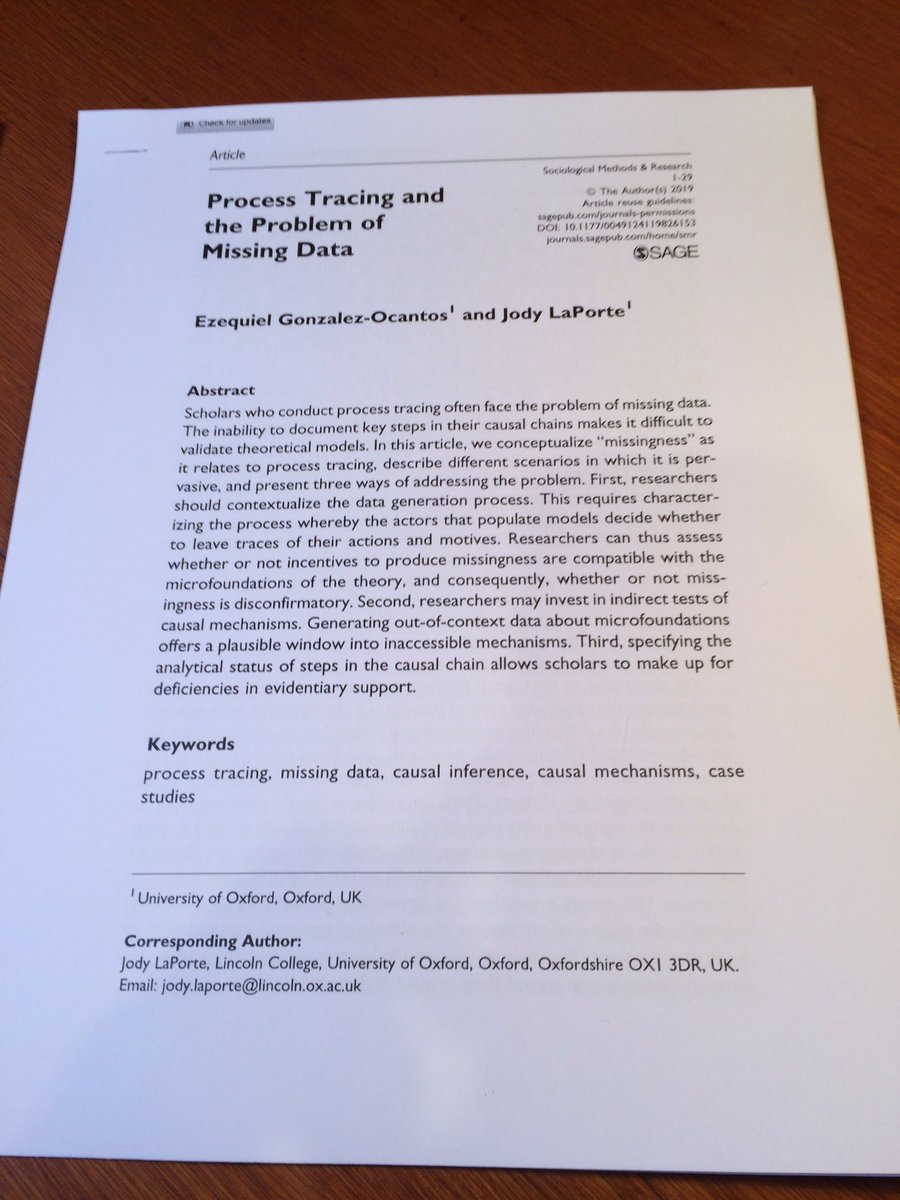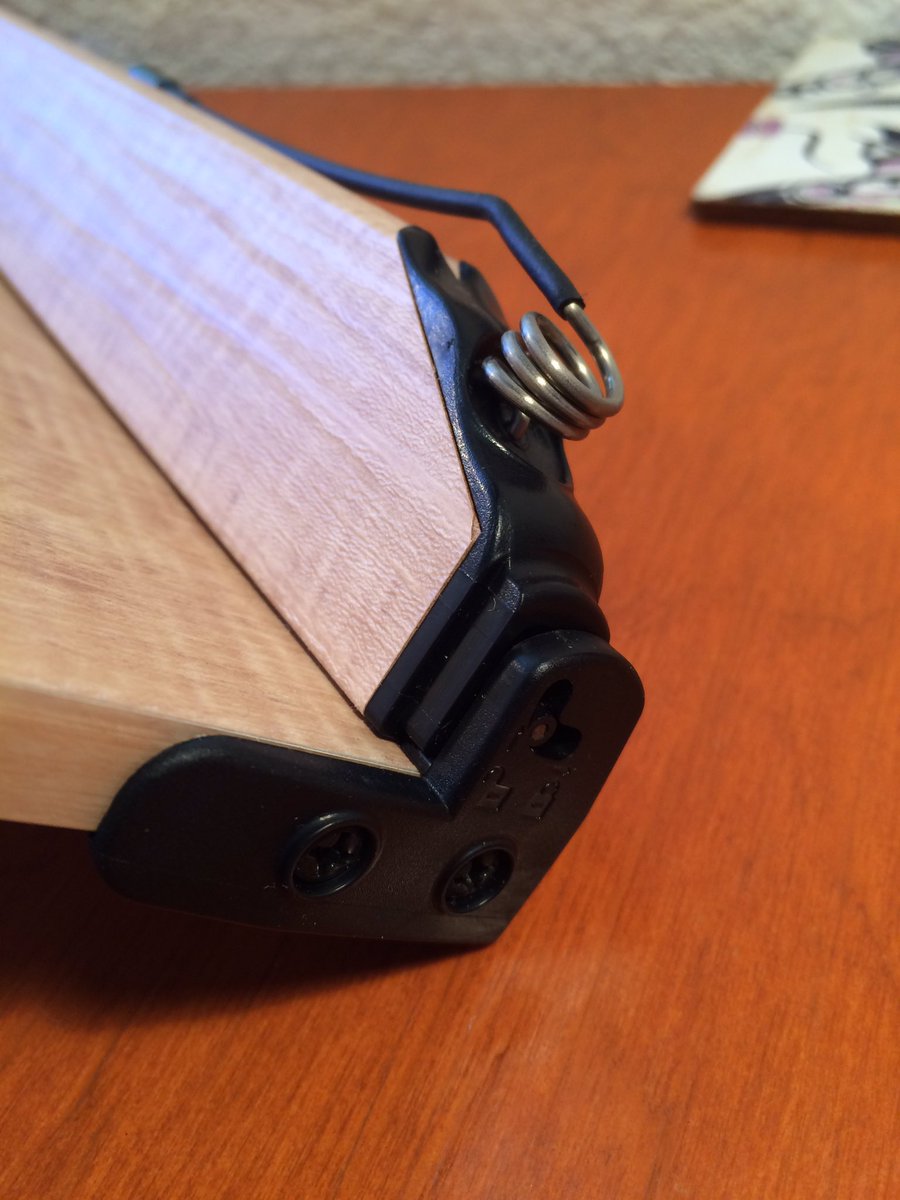
THREAD: on reading methods papers.
In a previous thread I indicated that in the same way that we need a repertoire of reading strategies, we also need to recognize the different types of articles, book chapters and books we read.
In this thread I’ll showcase several types.
In a previous thread I indicated that in the same way that we need a repertoire of reading strategies, we also need to recognize the different types of articles, book chapters and books we read.
In this thread I’ll showcase several types.
1) this piece about shadowing of political elites is one of my favourites - it’s in @polanalysis (a rather quantitative journal), focuses on a qualitative method (shadowing) and is by one of my favourite political scientists (@jenniferbussell)
I started with the Abstract.
I started with the Abstract.

Reading the first page took me just a few minutes and I can gain a lot of insight already.
I marked sentences that I’d like to quote directly (definition of shadowing, how it works). These direct quotations can go in a Cornell Note, CSED row or Everything Notebook or index card
I marked sentences that I’d like to quote directly (definition of shadowing, how it works). These direct quotations can go in a Cornell Note, CSED row or Everything Notebook or index card

As I have argued in other twitter threads and on my blog, I don’t think methods pieces should be *just* AIC’d. We need to read them in more depth. My argument is simple: someone took the time to give you an overview of a method. This requires a lot of thinking, analysis/synthesis
Therefore, I would recommend (when reading methods papers) using what I call "Deep Engagement" raulpacheco.org/2017/02/readin…
Can students do a quick AIC and once they've read that, determine if they want to do Deep Engagement? Of course they can.
That's the point of "triaging".
Can students do a quick AIC and once they've read that, determine if they want to do Deep Engagement? Of course they can.
That's the point of "triaging".
Triaging (selecting which articles to read more in-depth, and in which sequence) raulpacheco.org/2019/08/triagi… and learning how to do a Second Round of In-Depth Reading raulpacheco.org/2019/11/on-ski… are both key components of a broad repertoire of reading strategies.
As I've stated before, I think we need to teach students how to read, take notes, systematize their notes and then write. raulpacheco.org/2020/12/on-the…
As I read, highlight, scribble on the margins, I also take notes raulpacheco.org/2019/02/readin…
As I read, highlight, scribble on the margins, I also take notes raulpacheco.org/2019/02/readin…
Ok, I’ve reached the paragraph in the introduction that describes the paper’s structure. This process (reading, highlighting and annotating) took me in total 10 minutes.
I tell my students to write as much as possible of a CSED entry when they finish papers’ Abstract + Intro
I tell my students to write as much as possible of a CSED entry when they finish papers’ Abstract + Intro

Should I (or my students) write an Index Card, some notes in their Everything Notebook or a Cornell Note? Whatever they (or I) choose to do, I ALWAYS write a CSED row for every single paper I read. I can then go back to the full paper whenever I book the time to do so.
I use Bussell’s “paper structure” paragraph as a guide for everything I expect to know about the method by the time I am done. These paragraphs are often overlooked by readers, but they provide excellent signposting to discern exactly what we can expect from articles/chapters. 

My students always ask me: “professor, why don’t you just do digital or analog?”
I don’t think we should tie ourselves to just one technique or method or physical or digital support.
There are 3 reasons why I do a combination of digital and analog note-taking. I’ll explain.
I don’t think we should tie ourselves to just one technique or method or physical or digital support.
There are 3 reasons why I do a combination of digital and analog note-taking. I’ll explain.
1) I need redundancies in my life raulpacheco.org/2018/12/buildi…
I have physical planners and digital ones. I have a paper calendar and iCal and Google Calendar (all synchronized).
I also write by hand in my Everything Notebook raulpacheco.org/2018/12/note-t… but also use Evernote.
I have physical planners and digital ones. I have a paper calendar and iCal and Google Calendar (all synchronized).
I also write by hand in my Everything Notebook raulpacheco.org/2018/12/note-t… but also use Evernote.
2) I very, very strongly believe in searchability. raulpacheco.org/2020/02/on-the…
Physical supports have varying degrees of searchability. Digital materials can (potentially) work better for searchability.
3) I also believe in complementarity. Writing by hand helps me absorb material
Physical supports have varying degrees of searchability. Digital materials can (potentially) work better for searchability.
3) I also believe in complementarity. Writing by hand helps me absorb material
I tell my students and research assistants to ALWAYS keep a master Conceptual Synthesis Excel Dump (CSED or Excel Dump) or a series, too raulpacheco.org/2016/06/synthe…
This is a master digital file where they can dump all their notes (be it drawn from applying AIC or larger memoranda)
This is a master digital file where they can dump all their notes (be it drawn from applying AIC or larger memoranda)
For example, I started a CSED row for the Bussell 2020 article. Doing a quick AIC skim won’t give me all the great things Dr. Bussell writes in her piece, BUT it works as a placeholder. If a colleague or a student asks me “have you read about shadowing”, I have where to search. 

• • •
Missing some Tweet in this thread? You can try to
force a refresh














